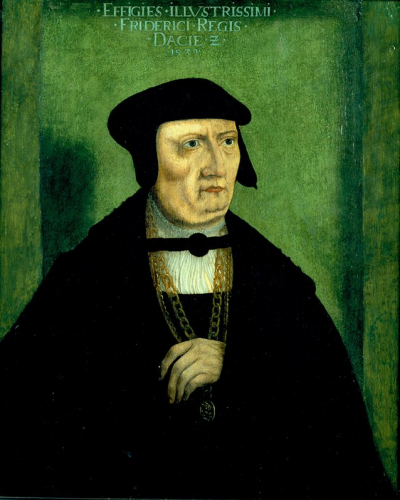The Battle of Hemmingstedt took place on February 17, 1500 south of the village of Hemmingstedt, near the present village of Epenwhrden, in the western part of present-day Schleswig-Holstein, Germany. It was an attempt by King John of Denmark and his brother Duke Frederick, who were co-dukes of Schleswig and Holstein, to subdue the peasantry of Dithmarschen, who had established a peasants' republic on the coast of the North Sea. John was at the time also king of the Kalmar Union.
Frederick I (7 October 1471 – 10 April 1533) was the king of Denmark and Norway. His name is also spelled Frederik in Danish and Norwegian,
Friedrich in German and Fredrik in Swedish. He was the last Roman Catholic monarch to reign over Denmark and Norway, when subsequent monarchs embraced Lutheranism after the Protestant Reformation. As king of Norway, Frederick is most remarkable in never having visited the country and was never crowned as such. Therefore, he was styled King of Denmark, the Vends and the Goths, elected King of Norway. Frederick's reign began the enduring tradition of calling kings of Denmark alternatively by the names Christian and Frederik, which has continued up to the reign of the current monarch, Margrethe II.

 English
English  español
español  français
français  português
português  русский
русский  العربية
العربية  简体中文
简体中文 
